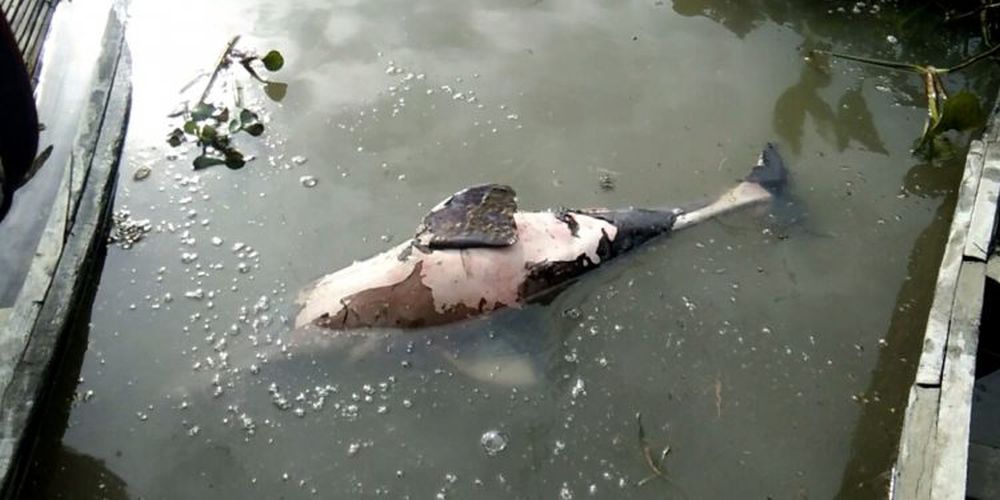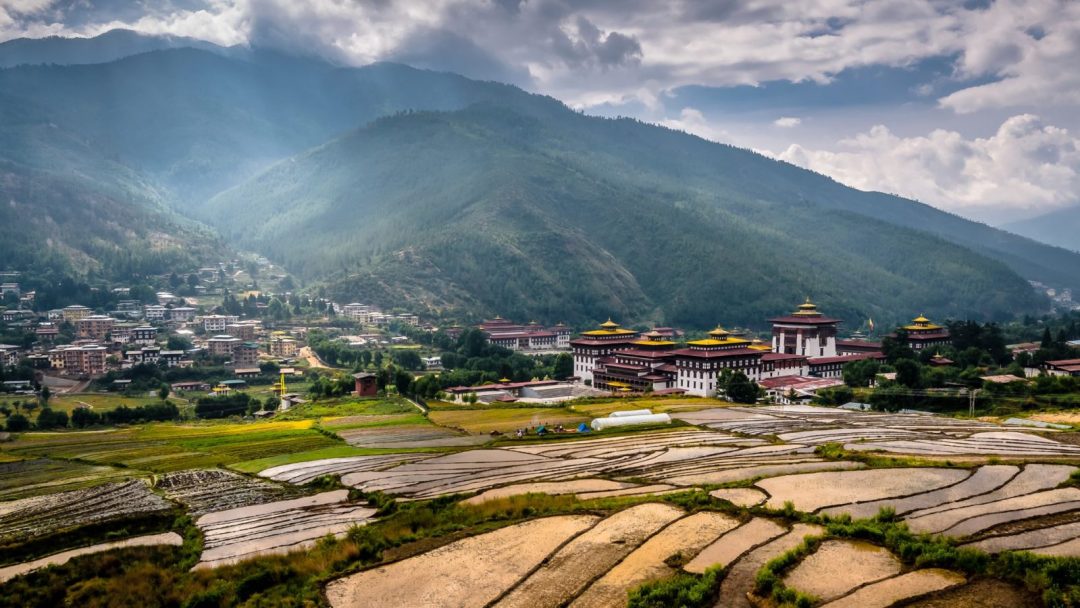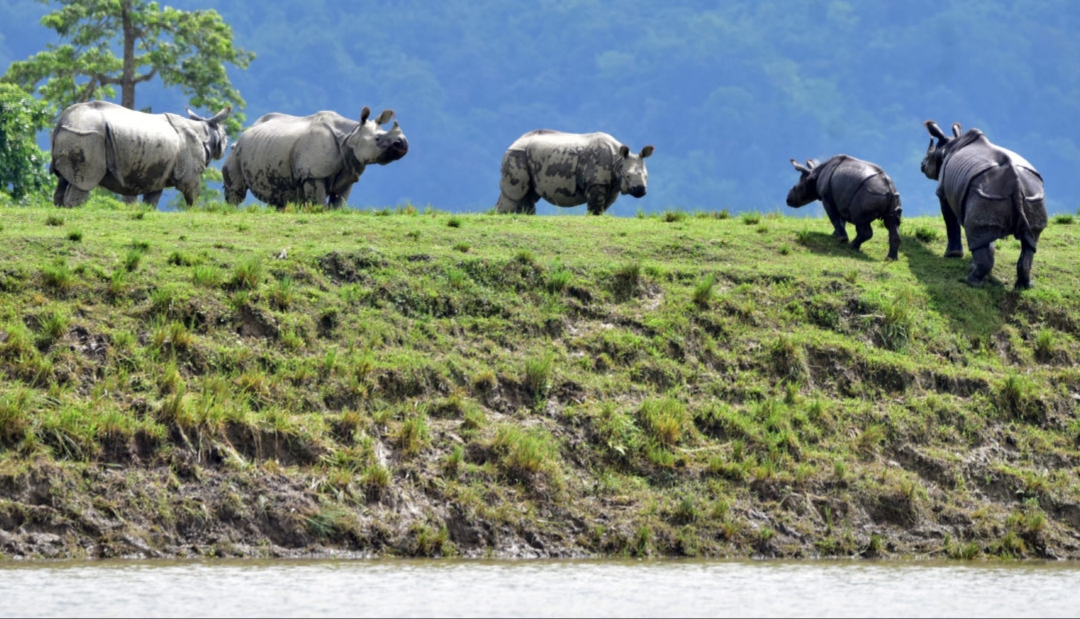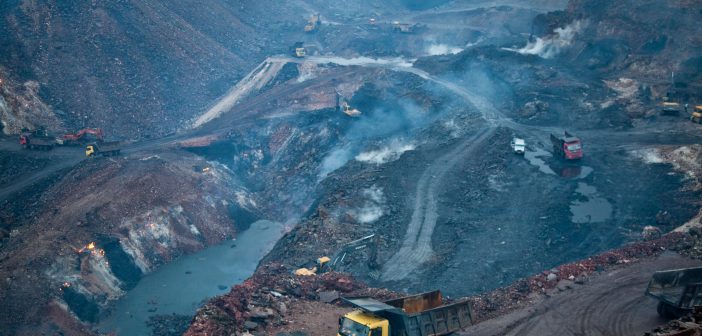At least 85% of the earth’s wetlands are already lost and freshwater species are at highest risk compared to forest or marine species, the report released on Thursday has underlined. The population of freshwater species including fish, birds, amphibians and mammals have declined by 84% globally since 1970, threatening one in three freshwater or riverine species with extinction, the Living Planet Report 2020 has said.
At least 85% of the earth’s wetlands are already lost and freshwater species are at highest risk compared to forest or marine species, the report released on Thursday has underlined.
The Living Planet Report which is released biannually by the Worldwide Fund for Nature (WWF) and the Zoological Society of London shows an average 68% decline in population of mammals, birds, amphibians, reptiles and fish since 1970. The report tracks the abundance of 20,811 populations representing 4,392 species based on a number of data sets available globally.
These population trends are brought together in what is called the Living Planet Index (LPI), which calculates the average percentage change in population sizes since 1970.
There is a 94% decline in the LPI in Latin America and the Caribbean, which is also facing massive losses in freshwater species due to fragmentation by hydropower projects and abstraction of water and a 45% decline in LPI in Asia and Australia.
Riverine ecosystems in India are also under threat. The size of wetlands in India has shrunk — to only 0.03% area of the total geographic area. In 2018, there were 351 polluted stretches of rivers , according to the Central Pollution Control Board, up from 302 in 2016. And there has been a reduction in the population of endangered species such as the rare Gangetic Dolphin.
Experts said that such degradation imbalances ecosystems, which can in turn lead to bigger problems. “Intact ecosystems with diverse assemblages of species can buffer the emergence of disease causing pathogens. When populations decline or transmission dynamics are altered, it increases the chance of spillover of pathogens to humans and associated domestic animals. Given the rates of change in natural ecosystems due to globalised economic activities, it is inevitable that new pathogens with the pandemic potential will emerge,” said Abi Tamim Vanak, Fellow, Wellcome Trust/DBT India Alliance Program (Intermediate Clinical and Public Health Fellowship) and Senior Fellow (Associate Prof) and Convenor, Centre for Biodiversity and Conservation, Ashoka Trust for Research in Ecology and the Environment.
Globally, habitat degradation through pollution or flow modification, overexploitation, invasive species and sand mining in rivers are among the biggest threats facing freshwater species. Freshwater megafauna—those that are large and grow to over 30 kg such as river dolphins, otters, beavers, hippos, the Chinese sturgeon and the Mekong giant catfish have recorded strong population declines. Large fish are also heavily impacted by dam construction, which blocks their migratory routes to spawning and feeding grounds.
Sand mining is a huge problem in Indian rivers. It is illegal to mine for sand from rivers in many states, but it goes on unabated, even in river stretches within protected areas.
“Free flowing stretches of rivers in India are the last bastions of aquatic biodiversity including fish, turtles, crocodilians, waterfowl and river dolphins. Unfortunately, we are still in denial about the irreplaceable ecosystem services of these rivers,” said Jagdish Krishnaswamy, a senior fellow at the Suri Sehgal Centre for Biodiversity and Conservation, Ashoka Trust for Research in Ecology and the Environment. “We need to revisit the plans for large dams in the Himalayas and inter-linking of rivers which may destroy the last remaining free-flowing stretches of rivers and their aquatic biodiversity. The Gangetic river dolphin, for example, is threatened by both reduced flows, barriers and dams as well as the under-water noise from increased vessel traffic in inland waterways,” he added.
The 164-page report drafted by 134 authors from 25 countries has also tracked how the global landscape has transformed over the years with satellite data which shows that only Russia, Canada, Brazil and Australia contain most of the places without a human footprint while all of India’s geographical area is highly modified by humans. About 58% of the earth’s land surface is under immense human pressure and only 25% can be considered wilderness, according to the report. The map in the report indicates there is no wilderness left in India, but it doesn’t say so explicitly.
The global land-use projections in the report show that without changes in diet — food production (including food loss and waste) is a major driver — the issue of land-use cannot be addressed. Food production causes 70% of terrestrial biodiversity loss and 50% of freshwater biodiversity loss. This is critical for India because it is the world’s largest producer of milk, pulses and jute, and ranks as the second-largest producer of rice, wheat, sugarcane and groundnut, WWF’s India factsheet said.
Overall the biggest threats to biodiversity according to the report is land use change followed by overexploitation of species; invasive species; pollution and climate change. “Covid 19 is nature sending us a message. In fact, it reads like an SOS signal for the human enterprise, bringing into sharp focus the need to live within the planet’s ‘safe operating space’. The environmental, health and economic consequences of failing to do so are disastrous,” the report warns.
HIGHLIGHTS
• 68% fall in monitored populations of mammals, birds, amphibians, reptiles and fish between 1970 and 2016
• More than 85% of area under wetlands is lost
• The Living Planet Index (LPI) tracks the abundance of 21,000 populations of mammals, birds, fish, reptiles and amphibians around the world
• There is a 94% decline in the LPI for the tropical subregions of the Americas
• There is a 65% decline in LPI for Africa and 45% for Asia and Australia
• 3,741 monitored populations – representing 944 freshwater species of mammals, birds, amphibians, reptiles and fishes have recorded an 84% decline since 1970
India’s rivers on the edge:
• There are 351 polluted river stretches in India as per Central Pollution Control Board’s 2018 assessment, up from 302 in 2016
• 45 out of the 351 polluted stretches are critically polluted
• Yamuna in Delhi; Damanganaga in Silvassa and Daman; Mithi in Mumbai; Ghaggar in Haryana; many stretches of Ganga are among critically polluted
• There are at least 1000 dams on the Ganga river basin obstructing the flow of various tributaries, according to a recent assessment by INTACH
• India ranks third in the list of countries with the largest number of threatened turtle and tortoise species in the world after China and Vietnam according to Turtle Conservation Coalition.
• Indian wetlands have altogether only 0.03% area of the total geographic area
• Only 1272 Gangetic dolphins were recorded in 3350 km of riverine stretch surveyed by WWF India in Uttar Pradesh, covering Ganga, Yamuna, Chambal, Ken, Betwa, Son, Sharda, Geruwa, Gahagra, Gandak and Rapti.
• Environment ministry estimates there are only 2500 endagered Gangetic dolphins left in India’s river systems. —–By Jayashree Nandi, Hindustan Times








